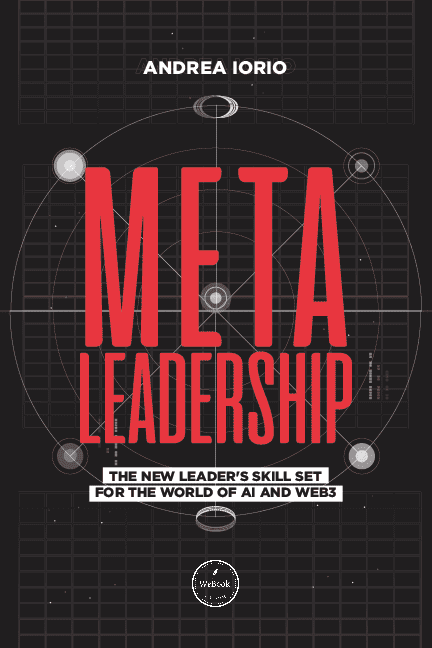Much is said about the great transformation that the third generation of the internet, (known as Web 3.0 or Web 3) will bring and about how it is already giving new meaning to our relationships in the digital world.
We are constantly exposed to content that brings good examples of some of the most famous services that are often attributed to Web 3, such as the Metaverse, Artificial Intelligence, Virtual Reality, Blockchain, Cryptocurrencies, Digital Twins, among others.
If you, dear reader, are like most business owners and leaders, you certainly want to be at the forefront of this great change that will affect not only the personal universe, but also the business world. This is precisely the right time to assure you that there is still time to update yourself on everything that Web 3 has to offer.
After all, despite all the buzz around the new internet era, it is still in the early stages of development and those who deal with business usually assure the importance of becoming an adept at the beginning of a new technological phase.
That's because no one wants to be left behind and run the risk of closing their doors because they didn't want to keep up with what the new world has to offer, right?
A tip before we continue:
If you are not familiar with some of the terms mentioned here in the article, I recommend listening to the episode of my podcast, Meta - Leadership, entitled “Web3 101: an overview of Web3 concepts and technologies”.
In this episode, I review in detail and in a simple way the main concepts and technologies related to the world of Web3.
What is the Web3?
I will not begin to explain the entire evolution of the Web and how we got here, however, I do get into more details about the evolution of the Web in the article "The 6 main areas of impact of Web3 within traditional companies", published on my LinkedIn page.
As defined in my publication, Web 3 is a decentralized, blockchain-based version of the internet. That is, in Web 3.0, all objects and places will be readable by machines and subject to the power of algorithms.
And who will it dominate? Most likely by anyone and everyone at the same time – being a decentralized Web.
The great promise of Web 3
Despite being in its initial phase, Web 3 already offers solutions that are considered significant milestones in the history of the internet. For example, we already see the use of Web 3 being applied when it offers better data privacy, eliminating central organizations and allowing users to keep their data stored in their personal cryptocurrency wallets.
From this, we can understand that the great promise of Web 3 is the democratization of the exchange of value, much like when we democratized the exchange of information in 1980 with the advent of personal computers. Remember that?
How does it impact your business?
Well, for starters, Web 3.0 technologies can help improve transparency and trust between companies and their customers. The use of blockchain technology, for example, can help create an inviolable record of transactions.
This would allow companies to build more trust with their customers by providing them with a transparent view of their business.
A company can use blockchain to provide customers with a real-time view of their supply chain. Thanks to this, customers can see where their products are at every step of the production process and be sure they get what they pay for.
I present a more detailed example of this process in the pharmacy industry in a post made on my personal website. I can briefly mention here three examples of how Blockchain technology impacts the supply chains of this science and health sector:
1 -Transparency (everything is tracked in real time).
2 – Speed (you can access information in real time and not wait for intermediaries to provide it for you).
3- Information sharing.
Moving on to business models, another factor is that each Internet interaction ended up generating new business models (in the case of Web1, eCommerce, software licensing models and so on emerged; in the case of Web2, this is already the case of the sharing economy like Uber and Airbnb, which we can also define as platform models; subscription models; Saas; marketplaces and the like).
In the case of Web3, there are new business models that are emerging:
One is launching a native token, i.e. an ICO.
Another one is the tokenization of physical assets (as in the case of real estate - stocks, commodities, invoices or real estate) that are valued against the underlying asset with a potential premium for divisibility and limitless liquidity.
Obviously, Direct-to-consumer, or D2C, which is a model that emerged in Web2, will continue to grow because in Web3 disintermediation is increasing.
Another interesting model is the communities one: let's assume you're a gamer, there's probably no way you can benefit financially from your hours of play. But what if, thanks to NFTs, you could monetize your efforts? This could be through the sale of accessories you've purchased, earned, or collected in the game's metaverse. This model is currently used in DAOs and can be applied not just to games, but to all kinds of communities.
This list is obviously not exhaustive, but it does give us the idea that we can monetize in completely different ways than in the past, and this has huge benefits for businesses in the Web3 world.
Investment forecast
According to a publication published by McKinsey called “Web3 beyond the hype”, “the main players of Web 3 are aware of the challenges related to the transition to the new phase of the internet and are actively working to address them, often funded by extensive venture capital”.
Also according to the publication, “Web 3 venture capital investments surpassed $18 billion in the first half of 2022, remaining on track to surpass total full-year venture capital investments of $32.4 billion in 2021 .”
Despite the present phase of development, the truth is that companies must keep an eye on their progress to capitalize on any opportunities as Web 2.0 is gradually replaced or even technologically converged with Web 3.0.
Food for thought
If you are still skeptical about all of this, I offer a mental reflection that is as follows:
When we read and hear about Web 3 and all these new technologies, perhaps we are more discouraged by so much information than motivated.
You will most likely end up thinking that your business does not need to embrace all this change. But think: which company needs a website? Fundamentally none. What business needs an app? Fundamentally none.
Which restaurant needs to use a QR code on the table instead of a paper menu? Fundamentally none. But everyone needs to update their ways of communicating and providing services with their customers and even with their employees, correct?
The truth is that the ways of relating and exchanging value change and in order to survive and prosper, our businesses will need to adapt as well.
Keywords Digital Transformation: Company, Business, Metaverse, Web 3, Web 3.0, Web 101, Bitcoin, BTC, Cryptocurrency, NFTS, 5G, Digital Twins, DAOS, Blockchain, Big Data, ReD, AI, AR, RPA, BASF, CX, B2B, Open Innovation, Andrea Iorio, Leadership, Web 3, Business, What is Digital Transformation, Business Transformation, Defining Digital Transformation, Digital Transformation Company, Digital Transformation Strategy, Technology Transformation, What Does Digital Transformation Mean, IOT









